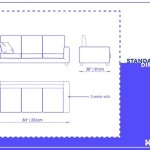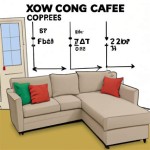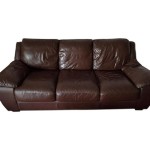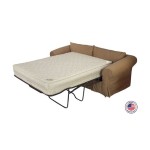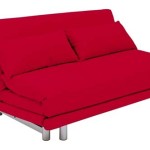Standard Height Sofa Table: A Guide to Choosing and Utilizing
The sofa table, a versatile and often overlooked piece of furniture, can significantly enhance both the functionality and aesthetic appeal of a living room. A well-chosen sofa table provides a surface for lamps, decorative objects, and everyday essentials, while also anchoring the seating area and creating visual balance. Understanding the standard height of a sofa table and considering various factors such as sofa dimensions, room size, and personal style is crucial for making an informed decision.
Standard Height and Dimensions
The standard height for a sofa table is typically between 28 and 32 inches. This height range generally aligns with the average sofa arm height, ensuring a comfortable and accessible surface. While height is a primary consideration, the length and depth of the sofa table also play important roles. The ideal length of a sofa table is generally two-thirds to three-quarters the length of the sofa itself, allowing for a balanced visual presentation. Depth, on the other hand, can vary significantly depending on the available space and intended use, typically ranging from 12 to 18 inches.
Material and Style Considerations
Sofa tables are crafted from a variety of materials, each offering unique aesthetic and practical properties. Wood, including solid hardwoods like oak, mahogany, and cherry, along with engineered wood options, is a popular choice for its classic appeal and durability. Metal, such as iron or steel, provides a more industrial or modern look, while glass offers a sleek and minimalist aesthetic. Choosing a material that complements existing furniture and overall room décor is essential for creating a cohesive and stylish space. Beyond material, the style of the sofa table, from traditional to contemporary, should also harmonize with the surrounding environment.
Functionality and Practical Applications
Beyond their aesthetic contribution, sofa tables serve several practical functions. They offer a convenient surface for placing lamps, providing ambient lighting for the seating area. They can also hold decorative objects, such as vases, sculptures, and family photos, adding personality and style to the room. Furthermore, sofa tables provide a practical space for everyday items like remote controls, books, and magazines, keeping them within easy reach. Some sofa tables even feature built-in drawers or shelves, offering additional storage solutions for smaller items.
Placement and Room Dynamics
The placement of the sofa table is critical for maximizing its functionality and impact. Ideally, the table should be positioned directly behind the sofa, leaving a few inches of space between the table and the back of the sofa for comfortable access. In larger rooms, a sofa table can also be used to define the seating area and create a sense of separation from other areas of the room. Consider the traffic flow within the room and ensure that the sofa table does not obstruct pathways or create a cramped feeling.
Choosing the Right Sofa Table for Your Space
Selecting the perfect sofa table requires careful consideration of various factors. The size of the room, the dimensions of the sofa, and the overall design aesthetic all play important roles in the decision-making process. In smaller rooms, a narrower and less visually imposing sofa table can help maintain a sense of spaciousness, while larger rooms can accommodate more substantial pieces. Matching the style of the sofa table to the existing décor, whether it be traditional, modern, or eclectic, is crucial for creating a harmonious and visually appealing space.
Beyond the Basics: Alternative Uses for Sofa Tables
While traditionally placed behind a sofa, sofa tables offer versatility and can be utilized in other ways. They can serve as an entryway console table, providing a surface for keys, mail, and other small items. They can also be used as a display surface in a hallway or dining room, showcasing artwork or decorative objects. In smaller spaces, a sofa table can even function as a compact desk, providing a dedicated workspace. This adaptability makes the sofa table a valuable and versatile addition to any home.
Care and Maintenance
Proper care and maintenance can prolong the lifespan of a sofa table and ensure its continued beauty. Regularly dusting the surface with a soft cloth will prevent the buildup of dust and grime. For wood surfaces, using a furniture polish specifically designed for the type of wood can help maintain its luster and protect it from scratches. Avoid placing hot items directly on the surface of the table, as this can cause damage. Following the manufacturer's care instructions will help preserve the integrity and appearance of the sofa table for years to come.
Investing in Quality and Durability
Investing in a well-constructed and durable sofa table is a wise decision. A high-quality piece will not only withstand daily use but also retain its aesthetic appeal over time. Look for sturdy construction, quality materials, and well-crafted details. While budget considerations are important, prioritizing quality can ensure a lasting investment that enhances the functionality and style of your living space.

Glass Top Console Table Everything You Need To Know

End Table Heights

Height Of A Sofa Table Ashley Furniture Home Office Check More At Http Www Nikkitsfun Com

Artissance Reclaimed Peking Console Table With 3 Drawers Weathered White Wash Finish 34 Inch Tall Bed Bath Beyond 29308823

Nordby Console Table Coffee Tables Accent Living Room Jysk

End Table Heights

Four Tips For Choosing The Right Coffee Table Post

What Is The Difference Between A Console Table And Side Living Spaces

Floating Top Steel Base Sofa Table American Made Custom James

What Is The Difference Between A Console Table And Side Living Spaces

